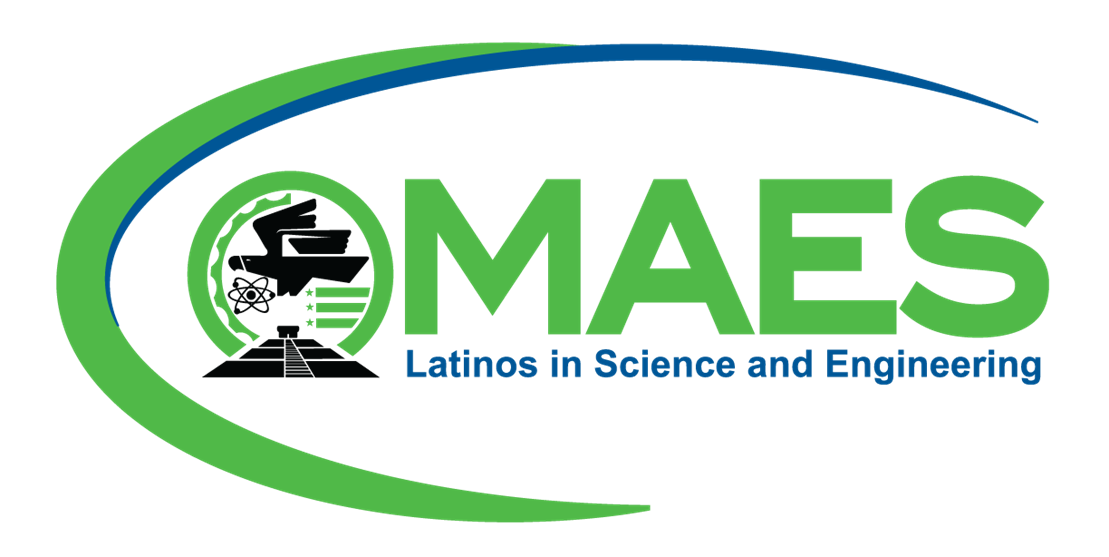The Medalla de Oro Award honors professional members of MAES, industry supporters, and members of academia. These individuals are highlighted for their outstanding achievement and contributions in science and engineering as well as service to the Latino community. The Medalla de Oro Award is the highest honor that MAES can bestow upon any member. Each recipient of the Medalla de Oro Award presents a Madrina/Padrino Scholarship in their name to a worthy MAES student member to symbolize the MAES concept of a “Bridge to the Future”. This establishes a lifelong relationship in which the Medalla de Oro Award recipient provides guidance and serves as a mentor for the young scientist or engineer.
The award itself consists of a beautifully engraved medallion made of gold to remind everyone that it was this precious element that brought together our ancestors over five hundred years ago and made us what we are today. The narrative on the medal is in English and Spanish to signify our bilingual culture resulting from the acculturation of our forefathers in a new nation. The message states that we will build bridges for all humanity and accept our duty to share those bridges with others. We also believe that we have the right to use all bridges, as science does not belong to anyone. The MAES logo is placed in the center plane to signify the role MAES accepts to serve as a “Bridge to the Future” by promoting the advancement of Latinos in Science and Engineering.
The Aztec calendar in the background, the significance of which still lies unexplored and hidden, depicts the great technological heritage of the many Latino cultures. The four elements from ancient science: earth, water, fire, and air, are represented on the rim of the medal to recognize other cultures and influences which add to our great and diversified community. At the forefront there is a futuristic building in the shape of a pyramid to signify the contributions that will be made by future generations of Latinos.
The Medalla de Oro Award was designed by Arturo Cano. Mr. Cano sought an award to honor individuals with a dedication to service, aspirations of greatness, and commitment to humankind. The award he designed carries with it responsibilities and strict disciplines. It carries with it the challenge to individual men and women to make most of their abilities and talents. It carries with it the responsibility of hard work, so that the well being of our community may be improved. It demands self-reliance and self-discipline. It also requires that individuals conduct themselves so that their life demonstrates the dignity of humanity.
The Medalla de Oro Award was first awarded at the 7th annual MAES National Symposium. At each conference the Medalla de Oro College, comprised of all past Medalla de Oro Award recipients in attendance, meet to evaluate nominations and select the new recipients.
All attempts have been made to collect complete and accurate information for this archive. Should you identify any corrections or have additional information to fill in missing blanks, please let us know.
|
1983 (Ventura, California) Manuel Castro Ralph Gonzalez Samuel Mendoza |
1984 (Albuquerque, New Mexico) Yolanda Garza Pete Tafoya Robert Von Hatten |
1985 (Anaheim, California) Oscar Cano Admiral Benjamin Montoya Celso Ovalle |
|
1986 (San Antonio, Texas) Ralph De La Parra Frank Guevara Mike Orozco |
1987 (El Paso, Texas) Al Mejia Dr. Fred Norwood Jose Perez |
1988 (Los Angeles, California) Herb Bustillos Nancy Gutierrez Manuel Jaquez |
|
1989 (Anaheim, California) Orlando Gutierrez Johnny Terrazas |
1990 (Albuquerque, New Mexico) Dr. Roberto Mcintyre Fred Rodriguez Alex Saenz |
1991 (Houston, Texas) Lupita Armendariz Enrique Colorado Rey Trevino |
|
1992 (San Antonio, Texas) Richard M. Delgado Robert Gomez Frank Moreno |
1993 (Long Beach, California) Curt Eley Richard Martinez Carolyn Vallas |
1994 (San Antonio, Texas) Arturo Gaytan Maria Pizarro |
|
1995 (Los Angeles, California) Chuck Gonzalez Dan Sveller |
1996 (Orlando, Florida) Oscar Gamboa Margaret Gonzalez Keith Marrocco Richard Navarro |
1997 (El Paso, Texas) Al Barela Pat Bryant Fernando Rico-Cusi |
|
1998 (San Diego, California) Hiram Betancourt Jack Pollock Fabian Rivera |
1999 (San Antonio, Texas) Michael Acosta Dr. Hector Carrasco Colonel Ismael Ortiz |
2000 (Santa Clara, California) Jose Hernandez Connie Medina Alfredo Ramirez |
|
2000 (Albuquerque, New Mexico) Cathy Allen Dean Elder Luis Franco Nehemias Ramos |
2001 (Houston, Texas) Esther Gonzales Enrique Gonzalez George Salazar |
2002 (Anaheim, California) Captain Kathlene Contres Hugo Lira Frank Robles |
|
2003 (Phoenix, Arizona) Jesus Benitez David Burris Jeff Salinas |
2004 (Austin, Texas) Gary Cruz Raul Munoz, Jr. Rafaela Schwan Vanessa Sustaita (posthumously) |
2005 (San Jose, California) Senturnino Franco Robert Navarro Mark Perez |
|
2006 (Houston, Texas) Louis Cancino Manny Sanchez Arturo Torres |
2007 (Albuquerque, New Mexico) Jesus Cardoso William Davis John Florez |
2008 (Las Vegas, Nevada) Gilberto Florez Carlos Ramirez Jorge Ramirez |
|
2009 (Las Vegas, Nevada) Lizette Macias Gloria Martinez Dale Rimmey |
2010 (Anaheim, California) Dr. Mike R. Lopez Irene Rico Captain Silvestre del Rosario |
2011 (Oakland, California) Gilberto Saenz, Jr. Antonio de la Serna Lt. Cmdr. Mark Venzor |
|
2012 (Las Vegas, Nevada) Alma Rosales Juan Zuniga Nancy Lowery |
2013 (Houston, Texas) |
